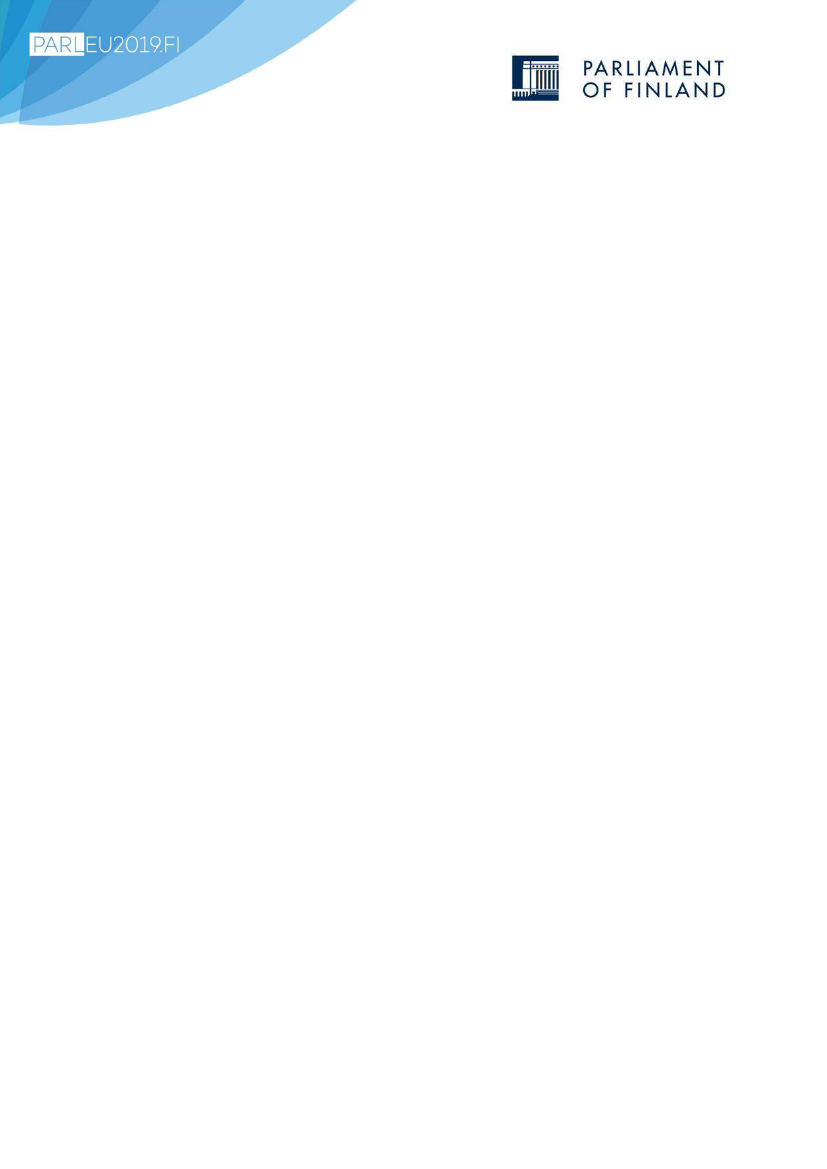
Inter-parliamentary Conference on Asylum and immigration
8–9 September 2019
Draft as of 26 June 2019
Towards a common European policy on asylum procedure, border control and
immigration
–
from discussions to solutions
Twenty years ago, in 1999, the Tampere Agenda was approved by the Member States during the
Finnish presidency of the Council of the European Union. The goal of the Agenda was to create a
common immigration, border control and asylum policy. The common policy has to be based on
joint liability, mutual trust and the sharing of responsibility. Illegal immigration is an issue that
needs to be considered comprehensively when developing a common European immigration,
border control and asylum policy. The causes underlying this problem include different standards
of living, the search for a better life and serious humanitarian problems and crises in third world
countries. Illegal employment is also an attractive factor for illegal immigration.
The same questions are still relevant in 2019, although some progress has been made. It is also not
likely that these problems and challenges would disappear in the next decades. At the same time,
it appears that the opinions within and between the Member States are increasingly divided and
polarised. This ongoing development could put the future of the Union at risk.
The Helsinki Inter-Parliamentary Conference is an opportunity to discuss even the most difficult
issues related to immigration, border control and asylum policy openly, constructively and in a
non-binding way. In the morning of 9 September 2019, the upcoming decades until 2050 are under
scrutiny. Looking at the issue over a longer time period allows us to see the measures that need to
be taken in the short term to keep immigration under control and to prevent problems related to it.
The second part of the meeting focuses more on today and on the near future. The afternoon is
devoted to discussing what needs to be done here and now to survive the polarisation and
challenges of the future. Discussions and speeches do have value, but in Finland real actions and
results are more important.
Sunday, 8 September 2019
15.00 -18.45
18.45
19.15-20.15
Arrival of delegations and registration at the hotels
Departure from the hotels by bus or on foot
Visit to the Finnish Border Guard vessel Turva
Address: Pier at Katajanokanlaituri 4 B
Police convoy from Katajanokanlaituri to Restaurant Katajanokan